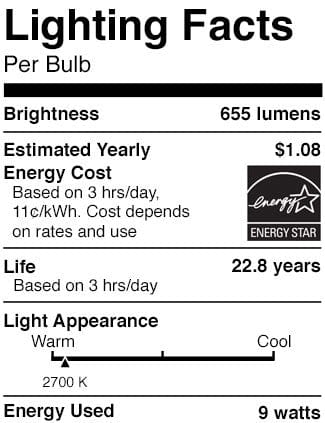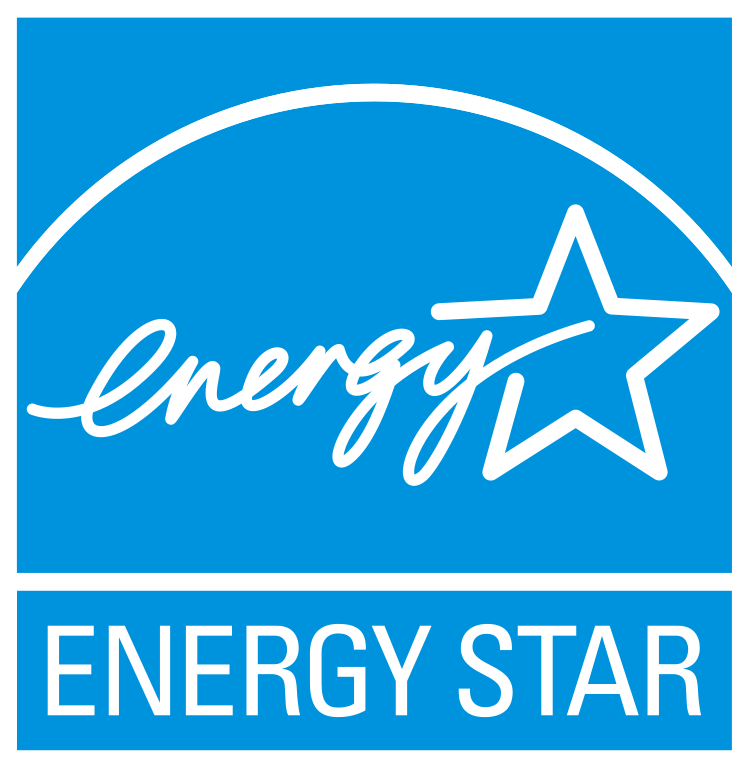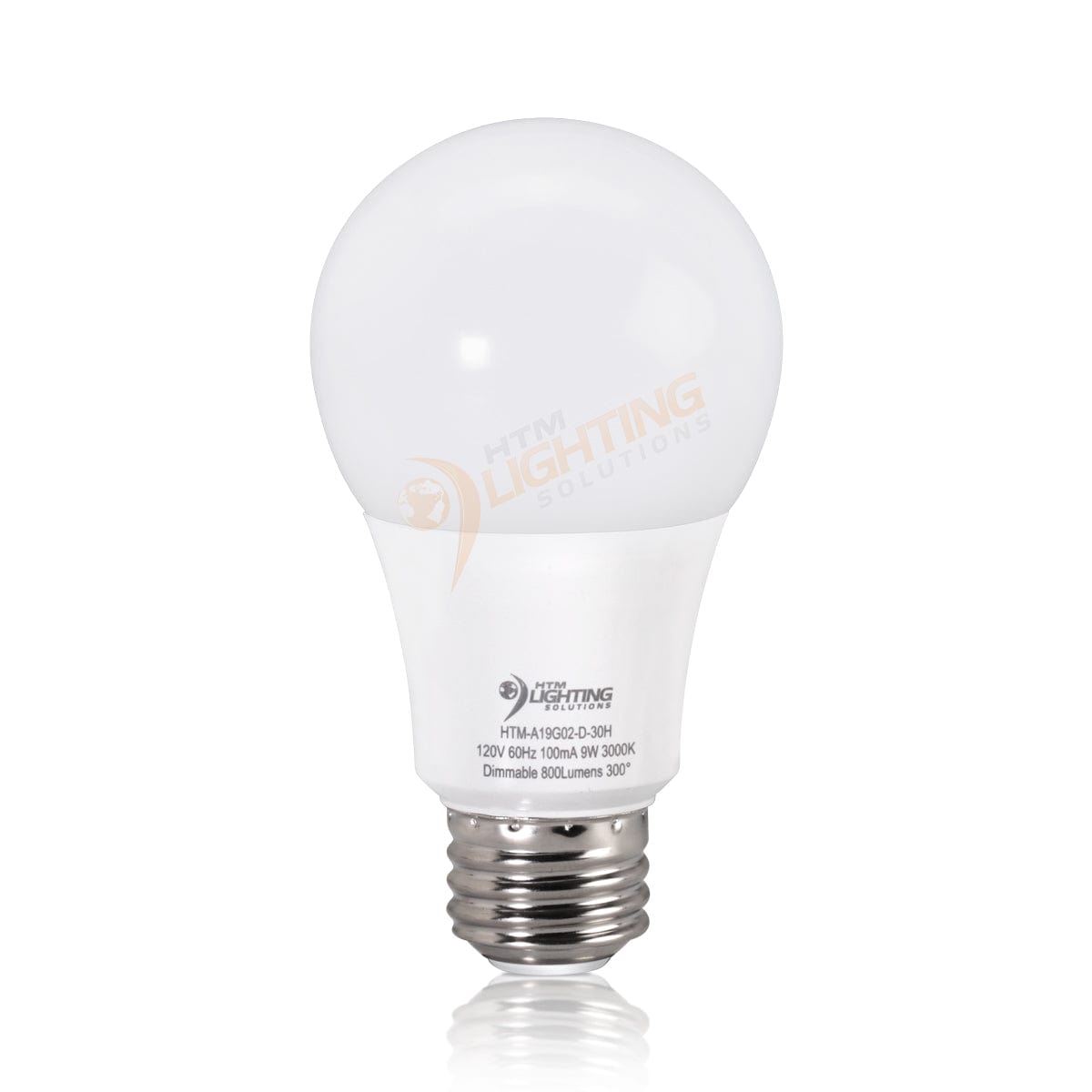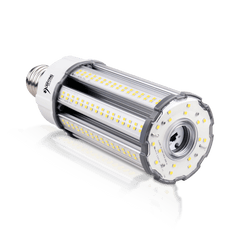Lighting Facts – Understanding the label and choosing the right bulb
 Trying to choose the right light bulb for your home can seem difficult. You may notice that each bulb comes with a lighting facts label with different information about each bulb. This light bulb information is extremely valuable but not everyone fully understands it.
Trying to choose the right light bulb for your home can seem difficult. You may notice that each bulb comes with a lighting facts label with different information about each bulb. This light bulb information is extremely valuable but not everyone fully understands it.
The Lighting Facts label is designed directly after the Nutrition Facts label and mandated by the Federal Trade Commission. With the information provided, we will help you to understand each part of the lighting label so you can choose the right light bulb for your needs.
Light Appearance (Color)
The color of a bulb’s light is most commonly measured by its Kelvin temperature (K). Typical bulbs range from 2700K – orange/yellow color, to over 5000K which can be white to sometimes blue colors.
Energy Use
The amount of energy a bulb uses is measured in watts. LED bulbs use less energy than incandescent bulbs and will list their incandescent ‘watt equivalent’ on the lighting facts label. The watt equivalent tells you which LED bulb can emit the same brightness as an incandescent of higher wattage. For example, a 13W LED can equal if not display brighter than a 75W incandescent!
Brightness - Lumens
While wattage equals how much energy a bulb uses, a bulb’s brightness is measured in lumens (lm). The higher the lumen count, the brighter the bulb. Wattage can be used to measure the lumen count simply by multiplying the wattage by 5 (75W x 5 = 375lm).
Bulb Life
The Life of a bulb measures how long until a bulb not considered useful. Unlike normal bulbs, the diodes inside fade overtime. The time it takes the diodes to fade can be measured in days or hours. 30 percent output is normally considered for a bulb to be no longer useful.
Energy Star
LED Bulbs with Energy Star rating are put under specific requirements to ensure they are saving users as much cost on their bill as possible while still producing the same light as a standard light bulb. With the requirements of these bulbs needed to be energy certified also comes possible rebates and a warranty that is 2-3 years longer than normal bulbs.
Mercury-Free
All LED bulbs are mercury-free. While compact fluorescent (CFL) bulbs do contain regulated amounts of mercury, there are still strict safety precautions that must be followed if a CFL bulb were to break.
LED Blue Light Warning
Some LED manufacturers have started to add labels warning the dangers of blue light exposure. While blue light exposure is said to be good during the day because it promotes attention, alertness, & awareness it can be harmful at night leading to possible sleep related issues. Bulbs around 2700K are recommended at night to help avoid these issues.
![LED Bulb]() Light Color (CRI)
Light Color (CRI)
CRI stands for color rendering index which is the measure of how true an object’s color compares under a light source to that of direct sunlight. This is measured on a scale of 0 to 100 with 100 being a perfect match color.
Omnidirectional
An LED bulb that is omnidirectional means its light shines in all directions.
What are PAR and BR bulbs?
Parabolic Aluminized Reflector (PAR) and Bulged Reflector (BR) LED bulbs are the energy efficient choices for recessed lighting and floodlight fixtures. The biggest difference between the bulbs is the numbers at the end which represent the bulb’s diameter in inches. This can be found by taking the number and dividing by 8.
- Hugo Merminod








